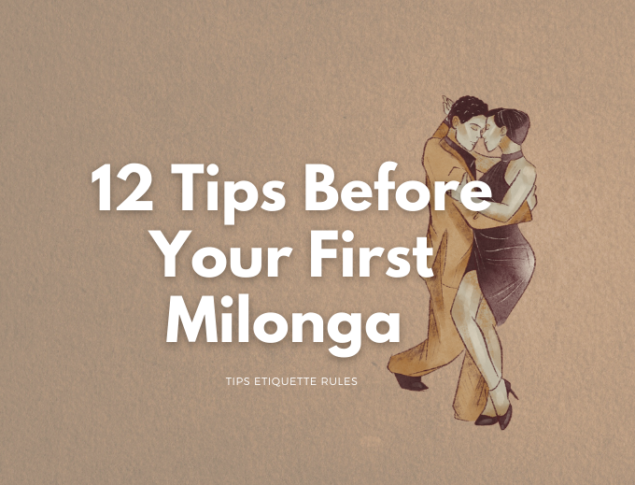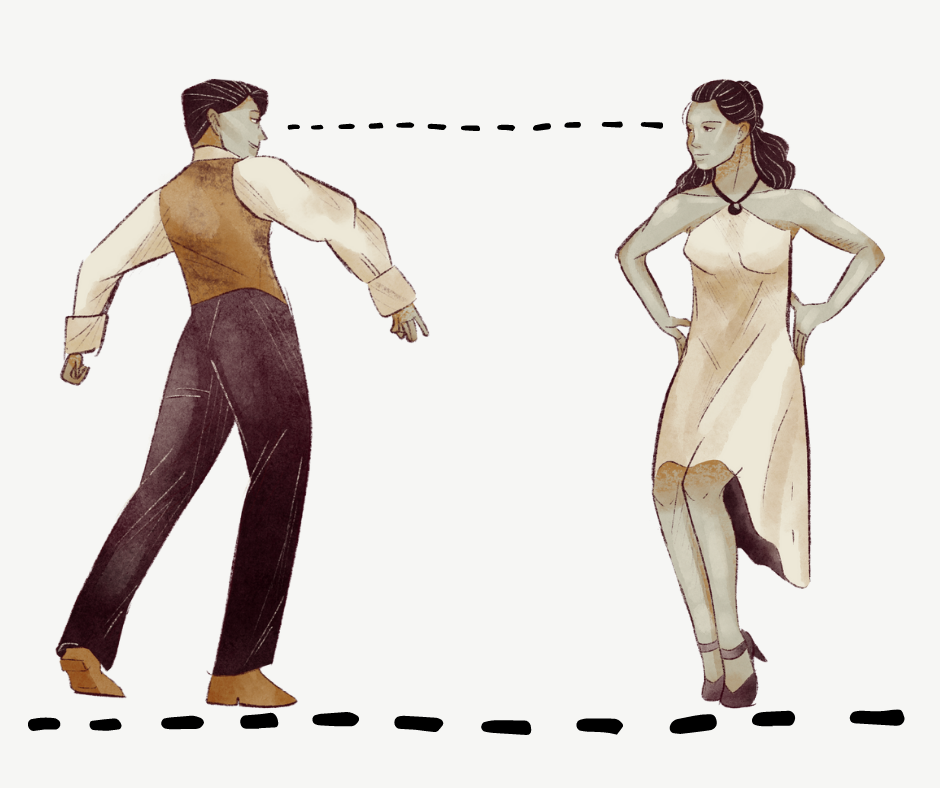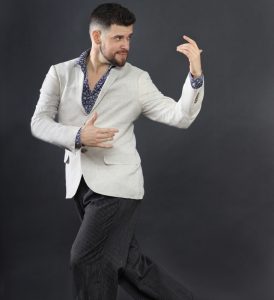
12 Tips Before Your First Milonga
The social world in Argentinian Tango is a bit different from the world of other dances. There are many unwritten milonga rules that a Tango dancer needs to know to blend into the crowd of a Milonga – or Tango Salon, as the dance halls in Buenos Aires are called.
Following these tango tips makes you a more successful social dancer – and it is a fun part of the Tango game!
So without further ado, let’s dive right into it!
Tip 1: Body Hygiene
This one is pretty obvious and not exclusive to Tango: Before you go out dancing, you should take a shower, wear clean clothes, and put on some deodorant. We often dance in a close embrace with friends or strangers alike. It becomes a much more pleasant experience if both partners feel and smell nice. For men, we advise bringing extra shirts to change, especially if you sweat a lot.
Additionally, to create an enjoyable atmosphere during close embraces, remember to maintain fresh breath and avoid overpowering perfumes or colognes. Finding the right balance ensures a comfortable environment for everyone involved.
Tip 2: Dress Up!
A Milonga can be considered much more like a visit to a nice restaurant rather than going to a club. In fact, in Buenos Aires it is common to have milongas in areas of cafes or restaurants; you meet your friends there, have dinner, and then you dance. And you wouldn’t go to a restaurant in your sweatpants, right? Even though in Europe milongas usually don’t serve food, the principle remains the same. Just take it as an opportunity to take out that nice new shirt, dress, or pair of dance shoes for a spin!
Tip 3: Don’t Go Alone
This one is more a recommendation than a rule but still can save you a lot of frustration. If you want to go out dancing, it’s best to go with a partner or ask your friends if they will be there. So, even if you don’t dance so much, you don’t like the music or the level of the dancers, you’re more likely to have a good time. In some milongas, the dancers know each other well and don’t dance with people they didn’t see dancing yet. So coming with a partner allows you to show your dance and make your Mirada/Cabeceo more likely to succeed.
Etiquette 4: Mirada & Cabeceo

This one is specific for Tango. In a milonga, you don’t just walk up to a stranger and ask for a dance. Instead, you make eye contact (Mirada, from mirar – to look) with your partner of choice, and if the eye contact is being held, you confirm with a slight nod (Cabeceo, from cabeza – a head). If that nod is returned, the leader walks to the follower and takes her to the dance floor.
What is the reason for this? Dancing together is always a consensual thing. Nobody owes a dance to anyone. Imagine what happens when you come to a dancer, take all your courage, ask for a dance, and get rejected! Now you have to do the walk of shame back to your place. The mirada/cabeceo system exists to save you from embarrassment and allow everyone to gracefully and discreetly accept or reject dances. Your Mirada is not being answered? Just look somewhere else!
Using mirada and cabeceo shows that you understand and follow Tango etiquette. And it will be appreciated by your fellow dancers!
Of course, if you are with your dear friends, it’s still okay to ask them directly for a dance.
Tip 5: Observe The Dance Floor
Again more a recommendation than a rule. Before starting your first dance, it is good practice to observe the dancers of the milonga. It helps you to find a person with whom you want to dance. It gives you an idea of the vibe of the evening and ultimately helps you to blend in.
Tip 6: Leaders Bring Their Followers To The Dance Floor
It is good etiquette for the leader to walk up to the follower after a successful cabeceo and escort her to the dance floor.
Rule 7: Caution When Entering The Dance Floor
On a proper milonga, the dancers move around on the Pista (the dance floor) in a Ronda (the circular, imaginary line around the room, on which we dance). They dance counterclockwise as much on the outside of the pista as possible. Very much like when entering a big street with your car, you need to make sure that the next leader sees you before you go. In Tango, the leader makes eye contact (Mirada) with the leader approaching from the left. Only when being sure that he was seen (e.g. by a slight nod or proper eye contact), he leads his partner to the floor. He starts dancing as soon as possible in order to not block the couple who let him in.
Rule 8: Dance In The Ronda

Once you’re in your ronda, stay in it. If it gets crowded, more than one line might form. Avoid switching lanes. The better dancers usually try to stay on the outermost ronda.
Keep at least one step of safety distance to the couple in front and refrain from leading more than one step back (clockwise). Bumping into another dancing couple is considered rude, and it’s best to avoid it at all. If it still happens, make sure the other couple is okay. You should keep dancing, but you can apologize after the song.
Avoid large movements or figures that are a danger for the couples around you. Always be mindful of your surroundings and keep moving – if you see a lot of space in front of you, it is likely there is a traffic jam behind you!
Tip 9: Stick Together For The Tanda
Tango music is structured in Tandas – sets of 4 (Tango) or 3 (Milonga and Vals) songs. They are separated by a Cortina – a song of non-Tango music.
Here are also a few dos and don’ts:
- When you chose a dance partner, stay together for the whole tanda.
- It’s better to not invite someone for the last song of a tanda. Wait for the next one!
- Once you hear the cortina, say thank you, which marks the end of dancing together for the moment.
- It is good etiquette for the leader to bring the follower back to where he picked her up.

Rule 10: Don’t Teach On The Milonga
This is an important milonga rule! Unless explicitly asked for advice, you should refrain from explaining things to your dance partners. If something doesn’t work, try to do it better yourself or try other things instead. A milonga is not a classroom or practica but a place to dance. And a good dancer is not somebody who can dance everything with everyone, but someone who understands what can be danced with whom.
Etiquette 11: The First And Last Tanda
When you go to a milonga with a partner, dedicate your first and last tanda to each other. It’s not a must, but a nice thing to do.
Etiquette 12: Respect And Grace
Respect your dance partners and the other dancers. It is not only about dancing but about being part of a social event and community. Don’t be mad if you don’t dance as much or with whom you’d like, instead use the time to enjoy the social aspect of the milonga, the music, the people. Bring positive energy and go with the flow.
About the author: Federico Suarez is a Munich-based tango dancer and teacher. He collaborates with Tango Flow as part of the Tango Young Munich Project. Federico is passionate about helping people enjoy traditional tango music and the social aspects of tango dancing.
